
Section 106 Tribal Agreements: Strengthening Government-to-Government Partnerships and Accelerating Project Delivery
This issue of Successes in Stewardship focuses on Section 106 agreements between the Federal Highway Administration (FHWA) and Federally Recognized Tribes (Tribes), and the respective roles of each agency involved in the Section 106 consultation and the agreement development processes. Agreements developed between FHWA and one or more Tribes can establish a shared set of expectations for consultation protocols that expedite the consultation process, facilitate increased trust, and lead to predictable and effective outcomes. The January 2017 newsletter provides additional information on Section 106 compliance.
The Importance of Tribal Consultation
Tribes have special status in United States law as they are recognized as sovereign domestic dependent nations. Because of this status, the Federal government has a “trust responsibility” that requires all Federal agencies to consider and protect Tribal interests as much as possible, as they fulfill their overall mission. In addition, the National Historic Preservation Act (NHPA) establishes that Tribal historic preservation, as part of the historical and cultural foundations of our country, is essential to our national identity and heritage. Key players in consultation often include those listed on the right.
Types of Tribal Agreements
The
ACHP
guidance identifies three types of Tribal agreement documents that differ by format and type. Tribal agreements may shape Section 106 consultation in a way that benefits all parties. Because many highway projects utilize Federal aid or require Federal approval, many State highway programs must address how to consult Tribes on hundreds of transportation projects on an annual basis.
Key Actors in Tribal Consultation
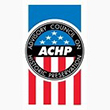
The Advisory Council on Historic Preservation (ACHP) is an independent Federal agency that promotes the preservation, enhancement, and productive use of our Nation’s historic resources. The ACHP advises the President and Congress on national historic preservation policy. A key responsibility of the ACHP is to assist Federal agencies with the requirements of Section 106 of the NHPA.
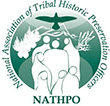
Tribal Nations and Tribal Historic Preservation Offices (THPOs) have unique knowledge related to both Tribal history and religious and cultural practices. The Federal government must consult with these parties on any Federal undertaking to determine its potential impact on important Tribal resources.

FHWA has a unique government-to-government relationship with Tribes, which includes both Alaska Natives, as well at Native Hawaiian Organizations (NHOs). Section 106 of the NHPA requires FHWA to consult with Tribes on undertakings that may impact listed, or eligible, historic resources on the National Register of Historic Places and properties with religious and cultural significance to Tribes.
Three Agreement Types
| Memoranda of Agreement (MOAs) |
For an individual project, this serves as a record of the agreed-upon resolution of a defined adverse effect for a specific undertaking. |
| Programmatic Agreements (PAs) |
There are two types—“project PAs” and “program PAs”—and they are appropriate for multiple or complex Federal undertakings where:
- Effects to historic properties that cannot be fully determined in advance;
- Federal agency programs;
- Routine management activities by an agency; or
- To tailor the standard Section 106 process to better fit with agency management or decisionmaking or to conclude and/or tailor the Section 106 process to a specific undertaking or program.
|
| Consultation Protocol Agreements (CPAs) |
Specify how a Federal agency and Tribe or NHO shall consult and how the Tribe or NHO will participate in the agency’s Section 106 review process. |
Key Terms
- An undertaking is a project, activity, or program funded in whole or in part under jurisdiction of a Federal agency.
- An adverse effect occurs when an undertaking may directly or indirectly alter characteristics of a historic property that qualify it for inclusion in the National Register of Historic Places.
The January 2017 edition of Successes in Stewardship and the ACHP website provide more detailed information on the Section 106 process.
Tribal Agreement Content and Implications
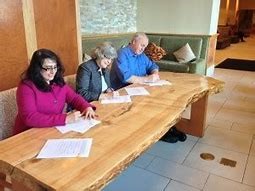
Signing ceremony for a DOT programmatic agreement in Alaska. (Image courtesy of FHWA)
The contents of tribal agreements may vary depending on the particular circumstances, but generally, the agreement will:
- Establish the terms of a formal, legally binding agreement between FHWA, the Tribes, and other relevant parties.
FHWA and the Tribe(s) are typically the primary signatories on these agreements. However, other Federal and State agencies such as the ACHP, U.S. Forest Service (USFS), State Department of Transportation (DOT), and State Historic Preservation Officer (SHPO) can also be signatories and concurring parties.
- Establish the process for consultation, review, and compliance with Federal laws.
Certain Section 106 agreement documents can administratively delegate some responsibility for consultation to State DOTs and Tribes, provide expedited timeframes, identify activities with little (or no) potential to affect cultural resources important to Tribes, and specify procedures for particular projects or complications arising from archaeological discovery. However, no Section 106 agreement can relieve FHWA of its legal responsibilities for government-to-government consultation.
Tribal Agreements by the Numbers
In 2018, FHWA conducted an inventory of existing Tribal agreements that quantified, assessed, and categorized existing agreements. Although most of the agreements are signed by a single Tribe, there are a variety of agreement types, number of signatories, term-lengths, and provisions used for these agreements. Some States have a single agreement with multiple Tribes (see case study below). It is not uncommon for a State to use a template agreement to development multiple individual agreements instead of having multiple Tribal signatories on the same agreement. The number, type, and signatories on existing agreements are detailed in the table below.
| Total Agreements |
| 46 Existing agreements dating back to 2001 |
| Signatories |
| 11% Signed by multiple Tribes |
| 89% Signed by a single Tribe |
| 87% Include State DOT as sole State-level signatory |
| 100% Include FHWA as sole Federal agency |
| Agreement Types |
| 25% MOAs and Memoranda of Understanding (MOUs) |
| 64% PAs |
| 11% CPAs |
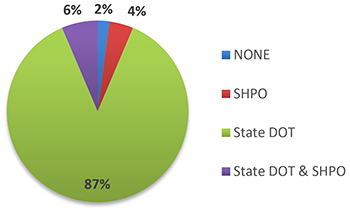
State-level signatory agencies on agreements, based on preliminary analysis, as a percent of agreements analyzed. (Figure courtesy of the U.S. DOT Volpe Center)
FHWA is analyzing the data it collected in 2018 and aims to:
- Use the results to help develop new Tribal agreements and inform updates to existing agreements.
- Post a selection of Tribal agreements to the Environmental Review Toolkit.
The inventory involved coordination with FHWA Division Offices, Federal Lands Highway Divisions, and reviewing the two publicly available databases (the
AASHTO
Center for Environmental Excellence Programmatic Agreements Library and the ACHP Website).
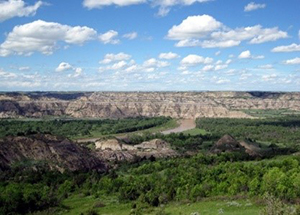
North Dakota landscape. (Image courtesy of
NPS/Mark Hoffman)
Case Study: North Dakota Tribal Programmatic Agreement
The FHWA North Dakota Division Office and the North Dakota Department of Transportation (NDDOT) developed and implemented a collaborative programmatic approach with multiple Tribes that has been highly successful and still effective after nearly 13 years. Although there are increased challenges to developing an agreement with multiple Tribes compared to an individual Tribe, this case study identified several useful agreement components, as well as lessons learned. The agreement took years of relationship building, consulting on individual projects, and establishing trust between parties to achieve a signed agreement. The resulting PA eliminates the need for project-by-project, Tribe-by-Tribe consultation and allows both NDDOT and the consulting Tribes to focus attention and resources on the projects that could affect properties of religious and cultural significance to the Tribes. See the full case study for more information on the agreement development process.
| North Dakota Tribal PA: Key Facts and Performance |
| Agreement Type: |
PA with multiple Tribes |
| Date Executed: |
2006 (Two years of development) |
| Signatories: |
| Federal: |
FHWA North Dakota Division Office |
| State: |
NDDOT |
| Tribes: |
11 including resident and non-resident |
|
| Performance: |
| 1600 |
Total projects processed 2009-2018 |
| 500 |
Projects with potential to affect historic properties |
| 200 |
Projects (of the 500) that had additional minor involvement after initial Tribal Consultation Committee (TCC) review |
| 20 |
Projects (of the 1600) that required sustained Tribal Involvement from start to finish |
| 0 |
Legal challenges |
|
NDDOT’s Collaborative Approach to Develop the Tribal Agreement
The NDDOT and FHWA encouraged a collaborative approach to achieve mutually beneficial goals and outcomes that are more predictable. Initially, NDDOT sought to develop individual agreements with each Tribe. However, after NDDOT began building relationships with multiple Tribes and hearing their consultation concerns, the Tribes suggested leveraging the collective knowledge and experience of multiple Tribes into one agreement that was stronger and more effective. NDDOT and FHWA embraced the idea of working with a group of Tribes, rather than several individually, as it would help achieve mutual goals and result in better outcomes for all parties involved.
NDDOT and FHWA, through consultation with the appropriate representatives from each Tribe, developed a prototype agreement that incorporated all of the parties’ primary concerns and objectives (see table below for more information on each parties’ objectives). The full agreement was drafted with active involvement from the Tribes and a final signing ceremony was held in 2006 to formalize the agreement and recognize the commitment and trust from all parties.
| Party |
North Dakota Tribal PA: Primary Objectives |
| Tribes |
- Acknowledgement of their cultural identities in the document
- Commitment to explain FHWA and NDDOT decisions regarding issues of concern to the Tribes
- Confidentiality of sensitive and privileged information discussed with NDDOT and FHWA
- Willingness to cover expenses to facilitate Tribes’ participation in this effort
|
| NDDOT & FHWA |
- Clearly defined approach to Tribal consultation that was honest and straightforward
- Exclusion of project types that were not of concern to the consulting Tribes
- An approach that satisfied Section 106 compliance and met consulting Tribes’ needs
|
| ACHP |
- Collaboration between agencies and their Tribal and State-level partners to develop consultation agreements
|
The North Dakota Tribal agreement process contained several unique components that have led to its continued success, including the following:
- Active participation from Tribal representatives in drafting the agreement
The process of working toward this agreement allowed for the development of relationships based on trust and respect.
- The formation of the TCC
Composed of representatives from each consulting Indian Reservation, NDDOT, and the FHWA, the committee agreed to meet at least twice a year to discuss projects and policy regarding NHPA compliance.
- A focus on training and continuous improvement
Under the terms of the PA, FHWA, NDDOT, and the consulting Tribes agreed to commit time, provide opportunities and personnel, and seek funding for cross-training related to Tribal, transportation, and other cultural resource issues.
- The development of the Cultural Heritage Manual
NDDOT drafted a document that functions not only as a guide to assist with cultural heritage issues, but also as an educational framework that addresses cultural phenomena that may not be well understood by NDDOT, FHWA, and Tribes.
Lessons Learned
The success of the North Dakota agreement process can provide valuable lessons about establishing relationships, communicating effectively, and developing agreements, as well as inform other elements of the ongoing consultation process. Effective Tribal consultation practices must be grounded in appreciation of and respect for cultural differences. The following elements are essential for the success of future Tribal agreement efforts:
- Acknowledge history.
The history of the relationship between Tribes and the Federal government has unfortunately been one of pain and loss that is still felt by contemporary Native Americans. Establishing trust and building relationships is an essential part of Section 106 consultation process and may take time.
- Foster trust, start small, and have patience.
The path to the multi-Tribe agreement took several years of sustained relationship building between NDDOT and the consulting Tribes, with strong support from the FHWA North Dakota Division Office. Relationship building started with project-specific consultations and grew from there. Differing communication styles and cultural expectations can make it difficult to establish trust and build long-term relationships. Instead of focusing on the differences between the parties, successful consultation often arises out of mutual respect, acceptance, and trust.
- Recognize the long-term benefits.
As demonstrated by the North Dakota PA, consultation is a continuous process of learning through education and interaction. The facilitation of a successful meeting or the development of an agreement should be viewed as individual parts of a long-term mutual effort, rather than end results. The relationships developed throughout the consultation and agreement development processes will continue to build trust as well as better enable all parties to achieve mutual goals and see outcomes that are more predictable.
Successes in Stewardship is a Federal Highway Administration newsletter highlighting current environmental topics, with an emphasis in accelerated project delivery and stewardship practices from around the country. Click here to subscribe, or call (617) 494-2013 for more information.

